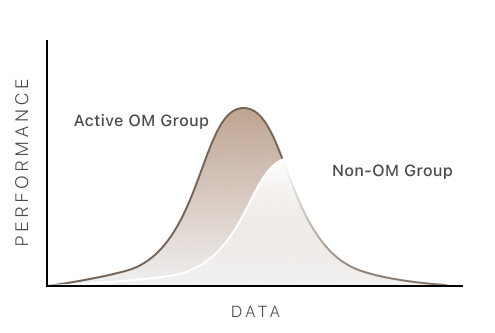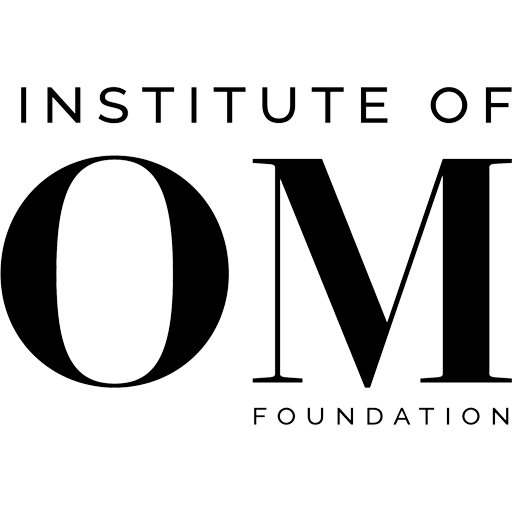Results
Science is confirming what practitioners of OM have known for years – OM has enormous benefits to physical, mental and emotional health. Nine IRB-approved studies have resulted in eight peer-reviewed publications to date. Two additional papers are in pre-print, with results still emerging. Some of the top findings include:

Mystical experience on par with a moderate psilocybin dose.
Researchers administered the mystical experience questionnaire to 780 respondents about OM and found that OM equates to the second highest dose of psilocybin.
Psilocybin therapy has long-lasting benefits for treatment of PTSD, depression, anxiety and substance abuse. Research shows it is access to the “mystical state” provided by psychedelics that is pivotal for healing — just accessing this experience results in alleviation of mental health symptoms. Researchers now find one of the best ways to access a mystical state is the pairing of sexual arousal with mindful concentration through OM. With OM, subjects are experiencing this state through their own neurobiology without the use of any substance.
The First Partnered Sexuality Study since Masters and Johnson
With current depression protocols like antidepressants, the best patients can hope for is to decrease the negative rumination or the negative suicidal ideation. You put a cap on your feelings, but you’re also putting a cap on your passion and on your desire to live.
In studies on OM and depression, using a sample of 250 participants who practiced OM, researchers found that participants had high positive affect and low negative affect. This means rather than putting a cap on emotions, the whole emotional range is widened, and individuals have an expanded life.

OM evokes strong changes in the emotional regulation centers in the brain.
There are a number of brain changes that occur in OM and these are likely associated with the spiritual elements of the practice.

Based on a study of over 125 pairs OM has been observed to:
- Increased closeness in both romantic and non-romantic pairs
- A higher level of post-OM closeness was seen in non-romantic partners
- Closeness may be a result of sharing in a positive experience
- Benefits, such as closeness, may be more sustainable if you practice OM more frequently
- Closeness can be improved after just one OM
Several areas of the brain alter in connectivity during OM and show similarities to meditation-based practices.
Specifically, the OM cohort in one study had a change in functional connectivity in the left superior temporal lobe, the frontal lobe, anterior cingulate, insula.
Females
For females, there were changes in the functional activity of the cerebellum, thalamus, inferior frontal lobe posterior parietal lobe, angular gyrus, amygdala and middle temporal gyrus, and prefrontal cortex.
Males
In males, functional activity changes involved the supramarginal gyrus, cerebellum, and orbitofrontal gyrus, cerebellum, parahippocampus, inferior temporal gyrus, and anterior cingulate.
OM May Improve Feelings of Connection
Areas of the brain involved with a sense of connectedness/oneness, intense emotions, and feelings of flow/surrender are affected in people who OM similar to brain changes in spiritual experiences.

Researchers found significant differences in functional brain connectivity when comparing participants in an active OM versus the control activity a placebo-OM experience. OM led to changes in a long list of brain areas, including those associated with focus and flow, spatial representation of the self or self-transcendence and both meditation and sexual stimulation. Dr. Newberg, a leading researcher in neuroscience, notes the responses more closely resembled reactions to religious and spiritual practices than sexual experiences.
Neuroimaging study of OM shows brain patterns similar to a psychedelic therapy experience, in the brain.
There are changes in the brain during OM that are similar to the brain changes seen with psychedelic therapy experiences such as changes in frontal and parietal lobe activity, along with changes in limibic function.
Several areas of the brain alter in activity and functional connectivity during OM and show similarities to meditation based practices.
There are distinct changes in the brain when comparing male and female participants. This is most likely associated with the different roles each play during the practice. Although, some brain activity changes are experienced by both male and female, regardless of role.
Male
Show “flow state” like patterns in the brain regional activity and functional connectivity.
This means the males show a state that is generally associated with effortlessness, focused attention, suspension of thoughts creating a positive experience of pleasantness and intrinsic motivation. A sense of being alert while letting go.
FeMale
Show significant “at one” like patterns in the brain.
This means the female is in a peaceful state feeling a part of or connected to the universe, their partner and themselves, as well as brain changes similar to and synchronized with the male.
OM Can Produce Mystical Experiences
- More than half (62%) of OM practitioners report a mystical experience with the Johns Hopkins Mystical Experience Questionnaire MEQ test.
- OM session shows similar MEQ results to a therapeutic dose of psilocybin*
- Johns Hopkins research has shown 60% of people who have mystical experiences from a therapeutic psilocybin also improve from symptoms of depression.
- Therapeutic psychedelic sessions can increase MEQ measures and can show efficacy in managing depression, addiction, anxiety, and resolving post trauma (PTSD).
*naturally occurring psychedelic prodrug compound produced by more than 100 species of mushroom

